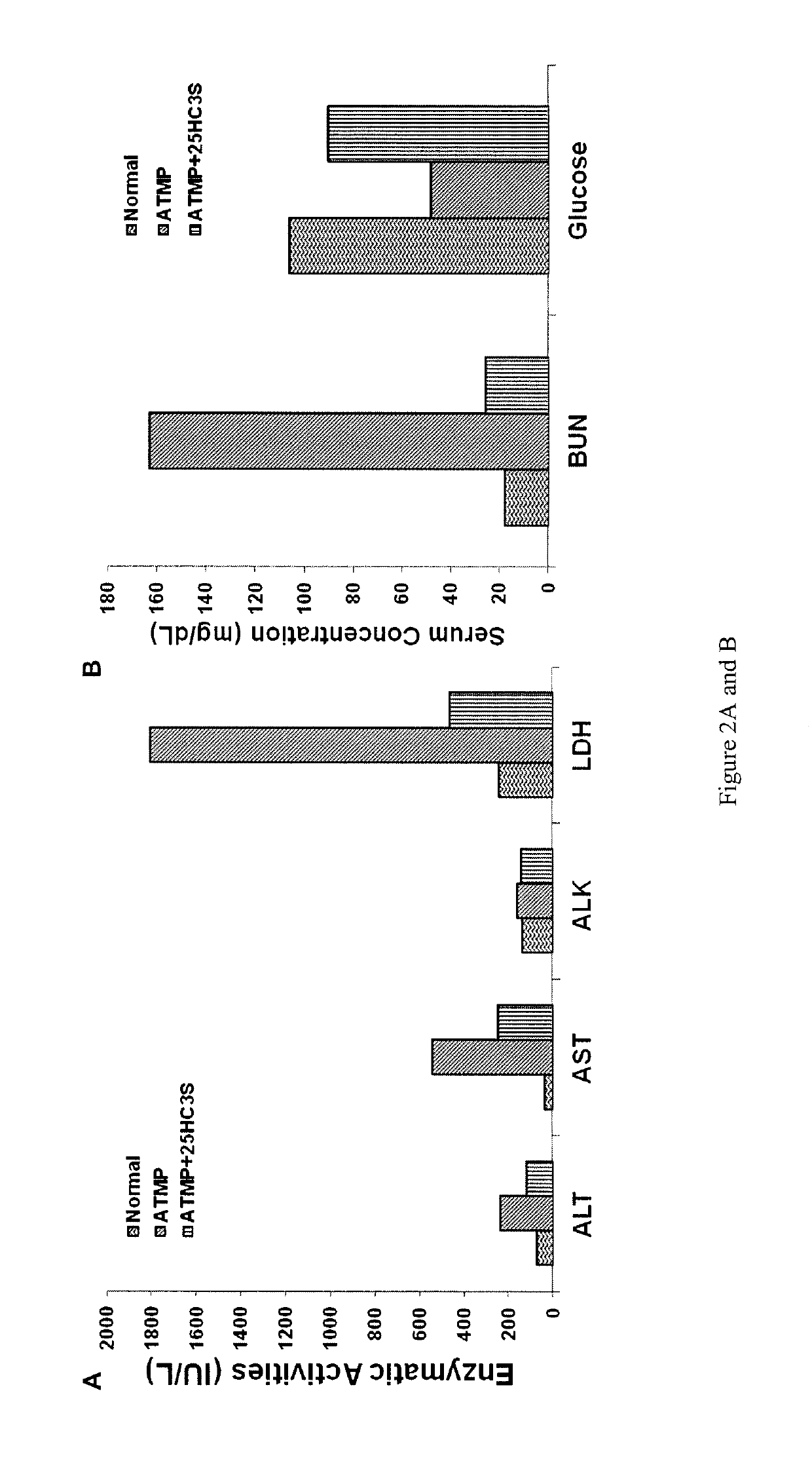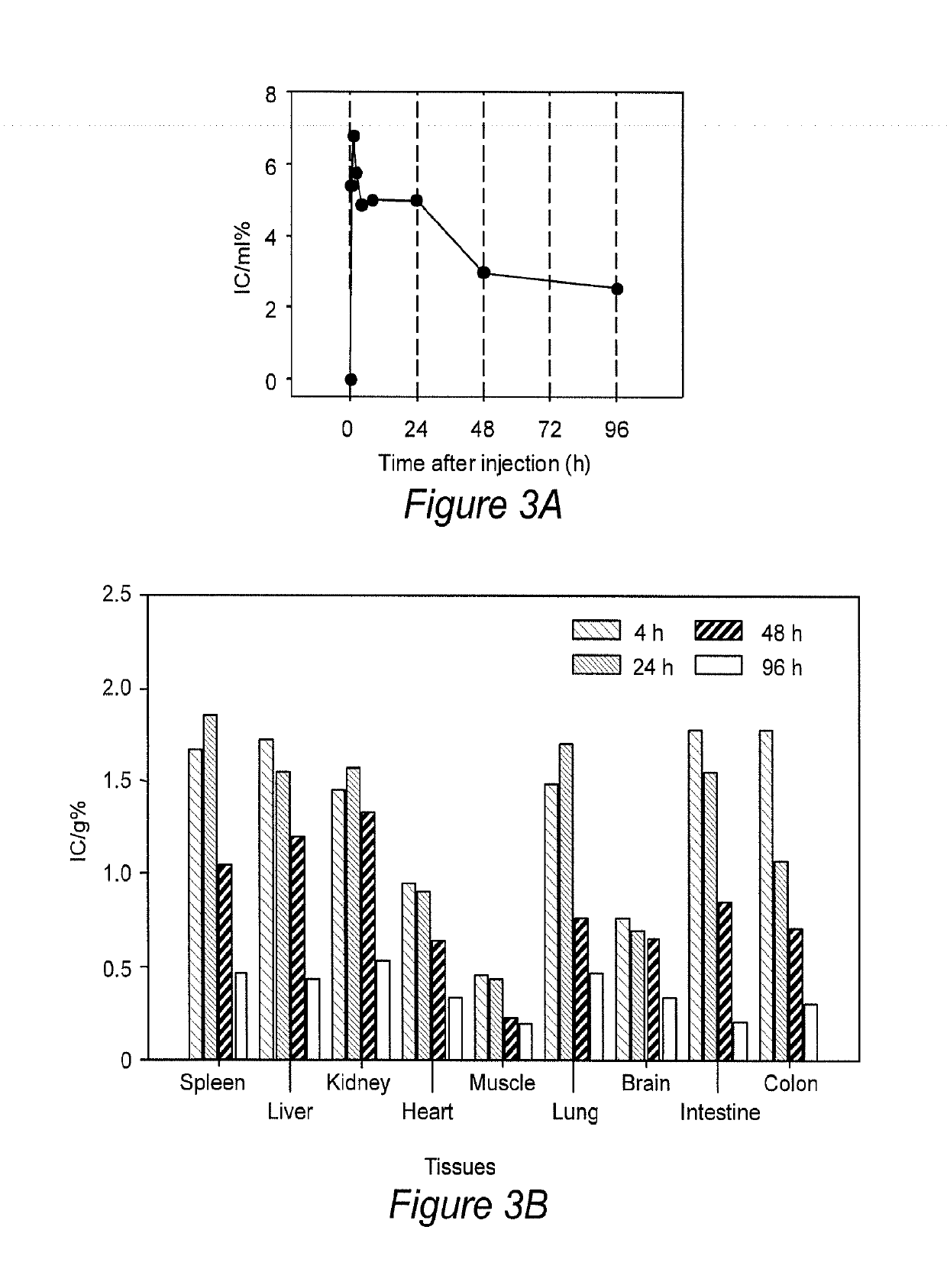Uses of oxygenated cholesterol sulfates (OCS)
a technology of oxygenated cholesterol and ocs, which is applied in the field of use of oxygenated cholesterol sulfates, can solve the problems of necrosis almost always detrimental, death, and premature death of cells in living tissue by autolysis, and achieve the effects of preventing or treating acute liver failure, and preventing or treating necrosis and/or apoptosis
- Summary
- Abstract
- Description
- Claims
- Application Information
AI Technical Summary
Benefits of technology
Problems solved by technology
Method used
Image
Examples
examples
Examples 1A and 1B. Impact of 25HC3S Administration in Mice Subjected to a High Dose of Acetaminophen (ATMP)
example 1a
Materials and Methods
[0178]Female mice were peritoneally-injected with acetaminophen (500 mg / kg, in 10% ethanol in PBS) either 0.5 or 2 hrs before being treated by administration of 25HC3S (20 or 25 mg / kg, 10% propylene glycol in PBS). Sera were collected 24 or 48 hrs following acetaminophen administration and enzymatic activities and other serum parameters were measured. Normal values were obtained from 10 mice who did not receive any injection, control mice received only acetaminophen (ATMP) plus vehicle, and experimental mice received ATMP plus 25HC3S.
Results
[0179]The results showed that ATMP administration significantly damaged liver tissues, increasing serum ALT activities 6-fold; and AST and LDH 20-fold. As shown in FIGS. 1A-D, treatment with 25HC3S 2 hours after ATMP administration decreased LDH by 60%; ALT by 58%; and AST by 45% within 24 hrs. In addition, treatment with 25HC3S 0.5 hours after ATMP administration returned most markers of liver and kidney function to normal l...
example 1b
Materials and Methods
[0181]In another set of experiments, female mice were peritoneally-injected with acetaminophen (600 mg / kg, in 20% EtOH in PBS) and were then further treated by peritoneal injection of 25HC3S (25 mg / kg in 10% PG in PBS) 2 and 24 hrs later. Control mice received ATMP without 25HC3S. Mortality was monitored for 10 days.
Results
[0182]As seen in FIG. 4, the survival rate of animals treated with 25HC3S was much higher than that of control animals, indicating that 25HC3S protected the animals from death due to high levels of ATMP.
[0183]FIGS. 5A-D show the values for the liver function (damage) markers ALT, AST, AKP and ADH for individual surviving mice. The mice are grouped as either controls who received ATMP and vehicle (“CON”) or mice who received ATMP and 25HC3S. Sera were sampled at 48 hours. As can be seen, animals to whom 25HC3S was administered in general tended to have lower values of each enzyme (i.e. values nearer normal) than control animals who did not rece...
PUM
 Login to View More
Login to View More Abstract
Description
Claims
Application Information
 Login to View More
Login to View More - R&D
- Intellectual Property
- Life Sciences
- Materials
- Tech Scout
- Unparalleled Data Quality
- Higher Quality Content
- 60% Fewer Hallucinations
Browse by: Latest US Patents, China's latest patents, Technical Efficacy Thesaurus, Application Domain, Technology Topic, Popular Technical Reports.
© 2025 PatSnap. All rights reserved.Legal|Privacy policy|Modern Slavery Act Transparency Statement|Sitemap|About US| Contact US: help@patsnap.com



